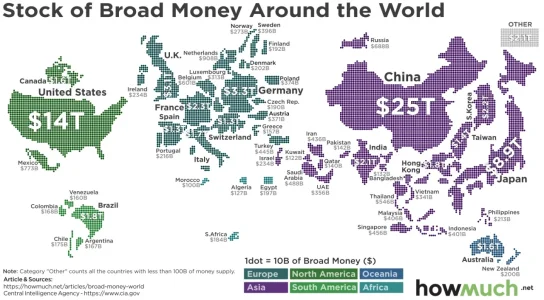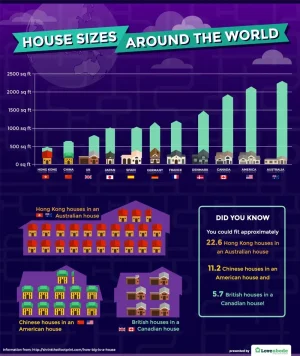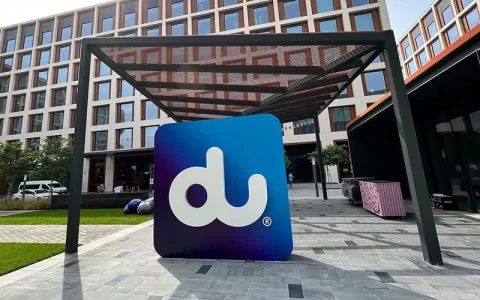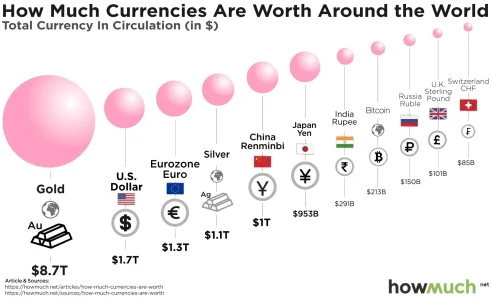Don't worry, Mexican expert,
Rome wasn't built in a day
If Mexicans work hard, Mexico will overtake the United States
the Chinese dreamer thinks Xi told you about the celestial country let us see facts
THE WORLD'S TOP 50 MOST AFFORDABLE PLACES IN WHICH TO BUY A HOME: Rank Country Average price of a 100sqm home Yearly salary GBP Annual salary as a % of the cost of a 100sqm home How many years it would take to buy a 100sqm home, based on an annual salary (if nothing was spent) 1 Saudi Arabia £67,021.00 £15,027.72 22.42% 4.5 2 South Africa £68,458.00 £12,441.12 18.17% 5.5 3 United States £207,171.50 £31,102.92 15.01% 6.7 4 Puerto Rico £11 0,363.00 £15,974.76 14.47% 6.9 5 United Arab Emirates £176,851.00 £24,037.56 13.59% 7.4 6 Palestine £56,950.00 £7,248.24 12.73% 7.9 7 Oman £124,856.50 £14,616.00 11.71% 8.5 8 Iceland £284,045 .50 £27,864.48 9.81% 10.2 9 Cyprus £129,848.50 £12,402.12 9.55% 10.5 10 Qatar £281,502.50 £26,669.16 9.47% 10.6 11 Ireland £287,569.50 £26,041.80 9.06% 11.0 12 Denmark £358,857.50 £31,306.20 8.72% 11.5 13 Belgium £246,952.50 £21,121.80 8.55% 11.7 14 Canada £295,275.50 £25,180.92 8.53 % 11.7 15 Australia £382,233.00 £32,103.84 8.40% 11.9 16 Netherlands £311,492.50 £26,128.32 8.39% 11.9 17 Mauritius £53,086.00 £4,410.24 8.31% 12.0 18 Bahrain £165,440.00 £13,610.04 8.23% 12.2 19 Sweden £337,997.00 £26,376.72 7.80% 12.8 20 Bulgaria £74,116.50 £5,720.64 7.72% 13.0 21 New Zealand £331,389.00 £25,4 42.88 7.68% 13.0 22 Latvia £108,030.00 £8,155.44 7.55% 13.2 23 Jordan £67,568.00 £5,096.64 7.54% 13.3 24 Trinidad And Tobago £98,005.50 £7,366.56 7.52% 13.3 25 Norway £420,486.00 £31,277.64 7.44% 13.4 26 Finland £325,716.50 £23,974.32 7.36% 13.6 27 Switzerland £761,039.00 £54,536.28 7.17% 14.0 28 £209,378.00 £14,603.40 6.97% 14.3 29 Turkey £49,395.50 £3,396.96 6.88% 14.5 30
Mexico £68,358.50 £4,683.96 6.85% 14.6 31 Germany £379,628.50 £25,911.84 6.83% 14.7 32 United Kingdom £356,940.00 £23,655.00 6.63% 15.1 33 Spain £207,998.50 £13,709.52 6.59% 15.2 34 Iraq £76,302.50 £4,899.72 6.42% 15.6 35 Estonia £183,164.50 £11,645.64 6.36% 15.7 36 Kazakhstan £57,871.50 £3,654.72 6.32% 15.8 37 France £368,845.00 £23,261.04 6.31% 15.9 38 Malaysia £114,585.50 £7,175.88 6.26% 16.0 39 Bolivia £69,929.00 £4,296.36 6.14% 16.3 40 Greece £124,005.00 £7,438.68 6.00% 16.7 41 Honduras £73,984.50 £4,4 26.80 5.98% 16.7 42 Costa Rica £109,043.00 £6,465.72 5.93% 16.9 43 Romania £100,047.00 £5,922.48 5.92% 16.9 44
India £66,095.00 £3,880.80 5.87% 17.0 45 Libya £100,375.00 £5,882.52 5.86% 17.1 46 Kosovo (Disputed Territory) £73,403.50 £4,283.52 5.84% 17.1 47 Bosnia And Herzegovina £92,580.00 £5,176.44 5.59% 17. 9 48 Moldova £64,246.00 £3,586.68 5.58% 17.9 49 Hungary £131,542.50 £7,260.72 5.52 % 18.1 50 Austria £376,826.50 £20,518.08 5.44% 18.4
THE WORLD'S TOP 20 LEAST AFFORDABLE PLACES IN WHICH TO BUY A HOME: Rank Country Average price of a 100sqm home Yearly salary GBP Annual salary as a % of the cost of a 100sqm home How many years it would take to buy a 100sqm home, based on an annual salary (if nothing was spent) 1 Ghana £377,032.00 £2,525.28 0.67% 149.3 2 Sri Lanka £157,077.50 £2,095.20 1.33% 75.0 3 Hong Kong £2,045,824.00 £27,874.32 1.36% 73.4 4 Jamaica £3 41,877.50 £5,583.36 1.63% 61.2 5 Iran £156,547.50 £2,698.68 1.72% 58.0 6 Philippines £130,598.00 £2,583.96 1.98% 50.5 7 South Korea £926,201.50 £19,617.00 2.12% 47.2
8 China £430,354.00 £9,261.00 2.15% 46.5 9 Argentina £160,414.00 £3,564.00 2.22% 45.0 10 Ethiopia £ 76,535.50 £1,734.96 2.27% 44.1 11 Kenya £150,894.00 £3,559.08 2.36% 42.4 12 Nepal £72,804.00 £1,925.88 2.65% 37.8 13 Indonesia £97,834.50 £2,621.88 2.68% 37.3 14 Zimbabwe £105,745.50 £2,843.04 2.69% 37.2 15 Taiwan £462,373.50 £12,589.68 2.72% 36.7 16 Thailand £179,429.50 £4,918.68 2.74% 36.5 17 Vietnam £128,941.00 £3,924.60 3.04% 32.9 18 Peru £104,440.00 £3,289.32 3.15% 31.8 19 Uruguay £161,793.50 £5,307.60 3.28% 30.5 20 Azerbaijan £79,795.50 £2,689.32 3.37% 29.7
With UK property prices increasing, experts analysed world property prices in relation to average wages to reveal the most and least affordable countries.

insideconveyancing.co.uk
Facts of life China has a large supply of Money but houses are ultra expensive

How much money is in circulation around the world at any given time? And how would the money supply of each country compare against each other? The visual reveals the answers. China has the most money in circulation ($25T), beating out the U.

www.linkedin.com
Of course having a lot of money in circulation does not mean prices are Cheap, a Mexican can take 14 years to buy a House, and Indian 17 years but rich Chinese take 45 years
How much money is in circulation around the world at any given time? And how would the money supply of each country compare against each other? The visual reveals the answers. China has the most money in circulation ($25T), beating out the U.

www.linkedin.com

Chinese houses are small but Rich Chinese claim every one has a house in China
7.
Mexico has the largest house by size in the South American Continent,
with an average house size by country of 1,400 square feet. The availability of timber and other building materials enables people to construct bigger houses

worldpopulationreview.com

worldpopulationreview.com
our Chinese cheerleaders say money is every thing in life










